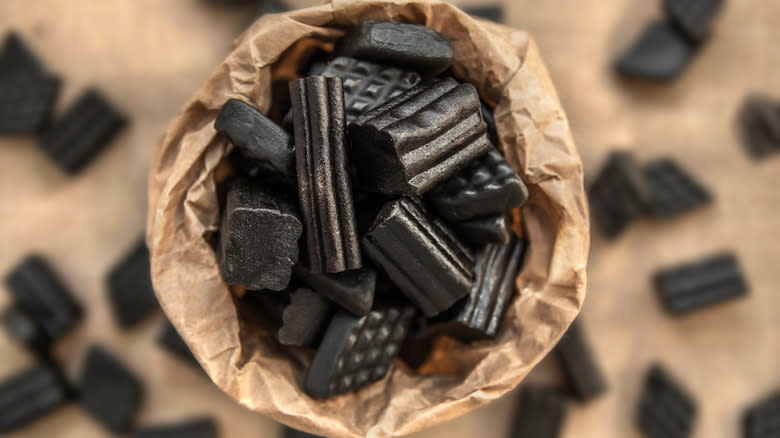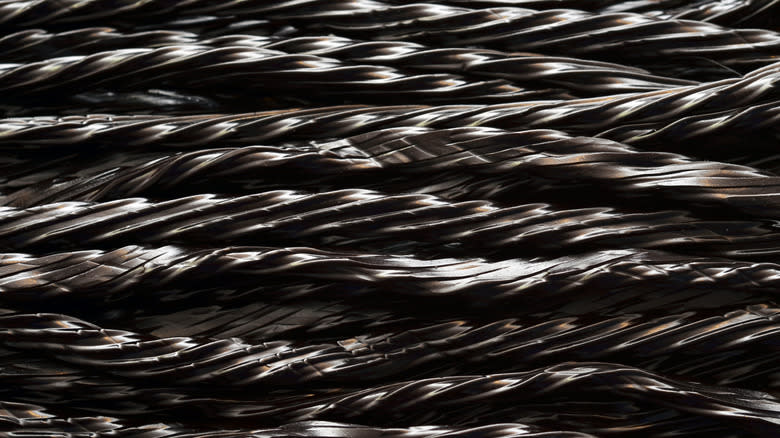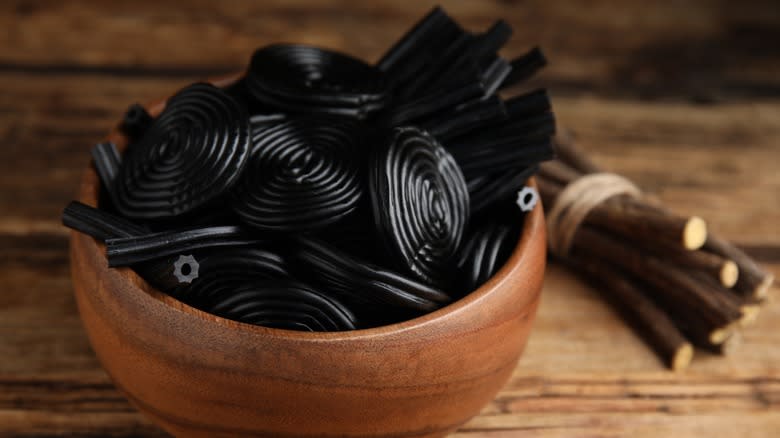What's The Actual Flavor Of Black Licorice, Anyway?

It's safe to say that black licorice is divisive. Some swear by the sweet treat while others can't stand the thought of it, but what many struggle to summarize is exactly what black licorice tastes like. Nay-sayers have all sorts of colorful descriptors for black licorice, with one Reddit user saying in a thread on the topic that the candy "tastes like my grandma's drawer full of medications." Even for commenters who were fans of the candy, the taste is "hard to describe. It has a unique taste in itself and It can vary a lot between different kinds since some roots can be naturally VERY sweet, or VERY bitter."
In actuality, the indescribable taste of black licorice most closely resembles either anise or fennel. Anise is a type of flowering plant that carries a potent licorice taste, which, admittedly, isn't super helpful in determining what that taste is. Anise has been described as sweet but slightly pungent, and since it's a flower, you can also expect an earthy flavor. Meanwhile, fennel contains a citrusy sweetness that sets it apart from anise. It's safe to say that licorice has an herb-like taste, as the flavor is also comparable to both basil and tarragon. But what, exactly, is in licorice?
Read more: 11 Discontinued Chocolates We Miss The Most
What Gives Black Licorice Its Flavor

Licorice's history stretches back several hundred years, as the candy found some audience in 18th-century Europe, but it wasn't until the candy shops of the 1900s that licorice's popularity boomed. You may be surprised, then, to learn that most licorice eaten in America today isn't actually considered licorice. The candy originally got its taste from a specific plant called Glycyrrhiza glabra.
Instead of using the extract from this plant, many manufacturers substitute aniseed oil to give black licorice its taste. The two plants are similar enough that many consumers likely won't notice a difference. So why is Glycyrrhiza glabra so often subbed out? It boils down to the price of anise, which is generally the cheapest of the two. However, the real licorice root is still commonly used globally, so it depends on where you're getting your candy. If you're making homemade licorice, you may want to opt for anise extract to give the treat its distinctive flavor.
Likewise, the other ingredients also vary based on what brand of licorice you're eating. Some sweeten the candy with sugar, others with molasses, and still others with corn syrup.
Why Black Licorice Tastes Bitter

So, why does black licorice get so much flak in the candy world? Well, whether you love or hate the popular childhood candy may be determined by your taste buds. Some people have reported that the candy tastes too bitter, while others report that it's too sweet. Who's right? Technically, both groups can be. Those who find the candy bitter may have taste buds that more readily detect the compound glycyrrhizin. That compound, which is similar to the sweetener saccharin, may also be why some people find the candy too sweet. In this way, hating licorice may be genetic.
The candy has, however, also been criticized for its potential negative health impact — at least the traditional kind of licorice, anyway. According to the American Heart Association, you should mind how much black licorice you eat. Consuming too much glycyrrhiza glabra, the traditional root for black licorice, can lower your potassium levels, which could potentially be detrimental to your heart health. According to the FDA, it's even possible to overdose on black licorice. Again, this only applies if the candy is made with the root extract, not with anise, so it's important to consider your candy's ingredients before consuming.
Read the original article on Daily Meal.

